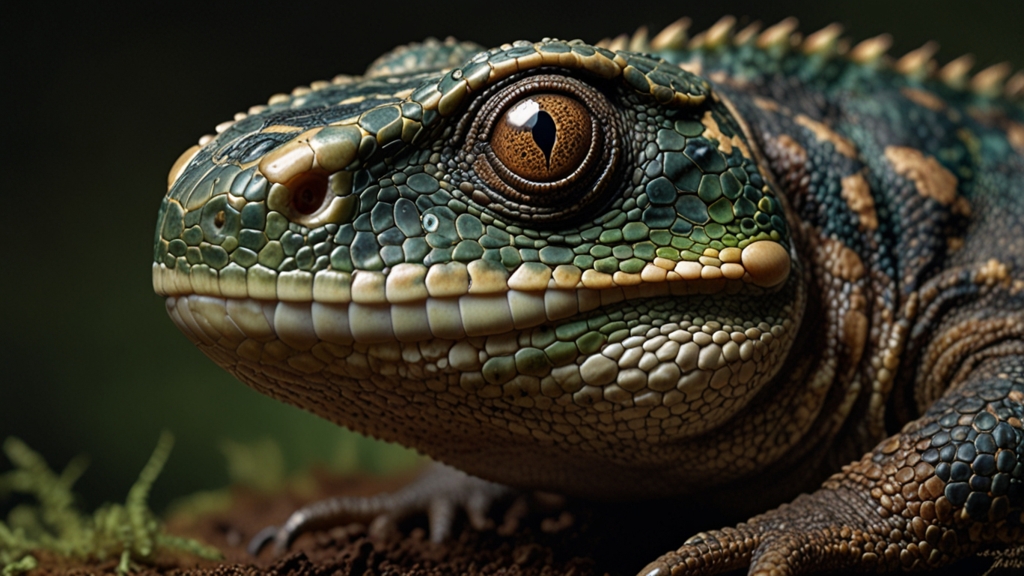Secrets of the Cold-Blooded: Unveiling the Mysteries of Reptiles
Reptiles have long captivated human imagination, symbolizing both menace and mystery. From the ancient dinosaurs that once roamed the Earth to the household pets lounging in sunlight, these cold-blooded creatures have a storied past and fascinating biology. But what are the secrets behind their survival over millions of years? Let's delve deeper into the hidden world of reptiles and uncover the intriguing facts that make them so extraordinary.
The Evolutionary Journey
The lineage of reptiles dates back over 300 million years, originating from amphibian ancestors. These pioneers of terrestrial life adapted unique features allowing them to thrive in diverse environments. Reptiles branched into four main groups: turtles, crocodilians, snakes, and lizards. Among these, dinosaurs ruled the Mesozoic era only to face mass extinction, leaving behind birds as their closest modern relatives.
"Dinosaurs ruled the Mesozoic era, with their colossal forms and varied species becoming iconic symbols of ancient life. Despite their extinction, their legacy lives on through birds, their closest modern-day relatives."
Cold-Blooded Adaptations
Reptiles are ectothermic, or cold-blooded, relying on environmental temperatures to regulate their body heat. This biological trait allows them to inhabit diverse climates, from arid deserts to lush rainforests. By basking in the sun, they absorb heat to become active, while seeking shade helps them cool down. This adaptability conserves energy, enabling their survival in resource-scarce environments.
Furthermore, many reptiles boast remarkable physiological adaptations. Snakes, for example, can sense thermal radiation with their specialized pit organs, allowing precise location of prey even in darkness. Meanwhile, some lizards exhibit autotomy, the ability to shed their tails to escape predators, which later regenerates—a fascinating display of survival mechanisms at work.
Secret Lives and Behaviors
Beyond their physical adaptations, reptiles demonstrate intriguing behaviors that highlight their complexity. For instance, the social structures of some lizard species involve intricate displays of dominance, including vibrant color changes and dramatic push-ups. Similarly, crocodilians use intricate communication through vocalizations and body language to establish territories and attract mates.
Reproductive Wonders
The reproductive strategies of reptiles are as varied as their species. While many lay eggs, some like certain species of vipers give birth to live young. This ovoviviparous mode offers offspring protection in environments where egg predation is high. Moreover, temperature-dependent sex determination in species such as turtles and crocodiles adds another layer of complexity to the reptilian reproductive world. The incubation temperature of the eggs determines the sex of the hatchlings, a unique biological phenomenon among these cold-blooded creatures.
"Temperature-dependent sex determination in reptiles, where the incubation temperature influences the sex of the hatchlings, underscores the intricate balance of nature in these fascinating creatures."
Conservation and Threats
Despite their ancient heritage, modern reptiles face numerous threats, primarily from habitat destruction, climate change, and poaching. Conservation efforts are crucial to protect these species and their ecosystems. Sanctuaries, breeding programs, and legal protections work to safeguard these remarkable creatures, ensuring that future generations can marvel at their mysteries.
Understanding the vital role reptiles play in their ecosystems is fundamental. They maintain the balance by controlling pest populations and serving as prey to many predators. Their conservation is not just about preserving individual species but also about maintaining ecological harmony.
Conclusion
Reptiles, with their cold-blooded nature and evolutionary marvels, continue to intrigue scientists and enthusiasts alike. By unveiling their secrets—ranging from their ancient origins and adaptive behaviors to their reproductive wonders and conservation challenges—we gain a deeper appreciation for these resilient creatures. As we continue to study and protect them, the enigmas of the cold-blooded will undoubtedly reveal even more fascinating insights into the natural world.








